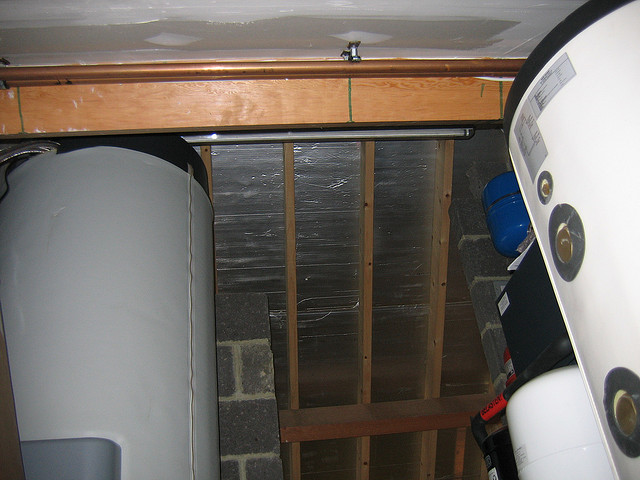Sidebar
What can I choose in the calculator?
Decentralised Heat Pump
 Bryn Pinzgauer via Flickr
Bryn Pinzgauer via Flickr
Contents
- Impact
- Global market
- Definition
- Constraints
- Assumptions
- References
IMPACT – What are the impacts of Decentralised Heat Pumps?
Energy system
![]() Reduces final energy demand.
Reduces final energy demand.
![]() IIncrease total electricity consumption.
IIncrease total electricity consumption.
![]() Reduce total heating oil and natural gas consumption.
Reduce total heating oil and natural gas consumption.
![]() Likely to significantly raise pressure on the grid by increasing peak electricity demand.
Likely to significantly raise pressure on the grid by increasing peak electricity demand.
Environment & Climate
![]() Very likely to reduce global CO2 emissions.
Very likely to reduce global CO2 emissions.
![]() Avoid emissions of harmful pollutants in built areas.
Avoid emissions of harmful pollutants in built areas.
![]() The refrigerants used in heat pumps often have high global warming potentials and be a serious pollution source.
The refrigerants used in heat pumps often have high global warming potentials and be a serious pollution source.
Society & Economy
![]() May increase the total cost of the energy system transition if ground source heat pumps are widely used.
May increase the total cost of the energy system transition if ground source heat pumps are widely used.
![]() May improve balance of payments by substituting domestic electricity for fossil imports.
May improve balance of payments by substituting domestic electricity for fossil imports.
![]() Reduces Confederation income from the tax on mineral oil under the current taxation system.
Reduces Confederation income from the tax on mineral oil under the current taxation system.
GLOBAL MARKET – What is the global market for Decentralised Heat Pumps?
DEFINITION / CONSTRAINTS
DEFINITION - What is a Decentralised Heat Pump?
A heat pump is a device that draws heat from the environment and delivers it to the space to be heated at a higher temperature. The device is generally driven using electricity.
Heat pumps can draw heat from the outside air (air source) or using a heat transfer loop that draws heat from the ground (ground source).
The performance of air source heat pumps diminishes at low external temperature. In contrast, ground source heat pumps operate effectively year round (because the heat source temperature remains more or less constant) but are more expensive to install.
CONSTRAINTS - What are the key barriers facing Decentralised Cogeneration deployment?
• Cold winter temperatures in Switzerland will limit the ability of air source heat pumps to operate effectively. Systems will either need to have back-up heating sources or to be ground-sourced, both of which are more expensive. Use of electric back-up heaters would limit the environmental benefits of the heat pumps.
• Use of distributed ground source heat pumps in urban environments will be limited due to the need for extended ground source collector area.
• The electricity generation mix must remain low carbon for distributed heat pumps to be a sustainable option in the long term.
ASSUMPTIONS – What are the assumptions considered in the calculator?
Next tables contain the assumptions that have been introduced in the Centralized heat pump model of the calculator.
| COP | ||
|---|---|---|
| 2011 | 2035 | 2050 |
| 3 | 4 | 4.5 |
| Emissions | |
|---|---|
| 2011-2050 | |
| CO2-eq. emissions [kgCO2-eq./kWhth] | They depend on the electricity production. |
| Deposited waste [UBP/kWhth] | |
| Cost | |
|---|---|
| 2011-2050 | |
| Specific investment [CHF2010/kWth] | 1486 |
[1] EurObserv’ER 2013, Heat pumps barometer




